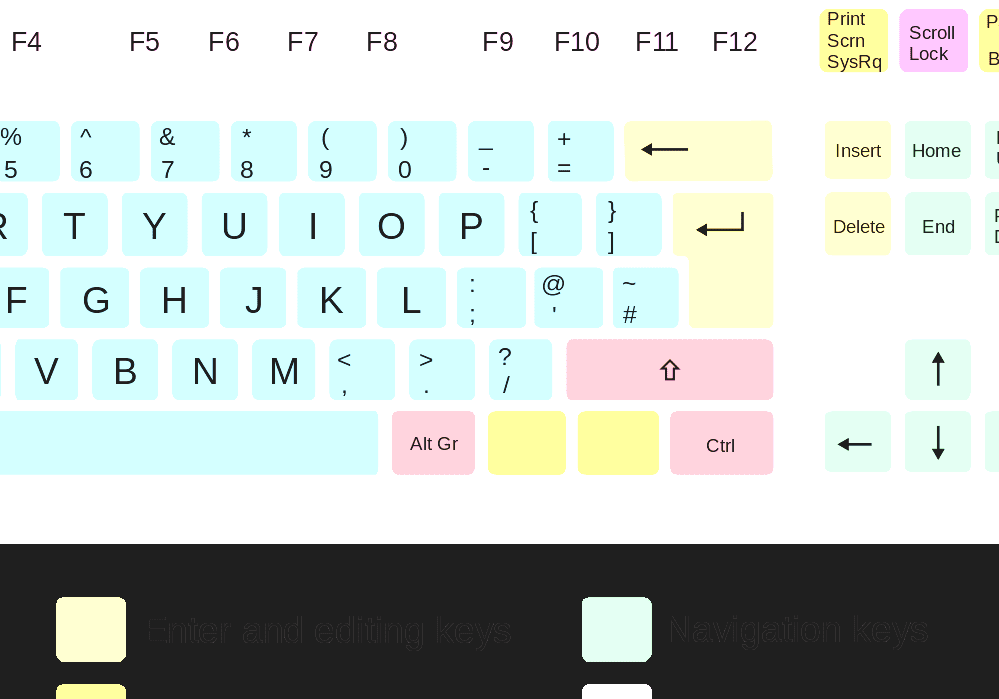
- #Iso standard keyboard layout install#
- #Iso standard keyboard layout Pc#
- #Iso standard keyboard layout iso#
#Iso standard keyboard layout install#
The easiest way to do that is to install Karabiner-Elements and set it up like this:Īlso note that this keyboard layout is not applied before you log in after a reboot, but it is applied before you log in after logging out. If you want to use a different keyboard layout, you need to create a custom keyboard layout.
#Iso standard keyboard layout iso#
However, there are other popular keyboard layouts such as the ISO keyboard layout and the ANSI keyboard layout. By default, most keyboards come with a standard US keyboard layout. You probably want to swap those so that copy/paste shortcuts etc. The keyboard layout is a layout that is used for the keys on a keyboard. If you are in Europe or South America most likely this is the layout you want. That should give you a normal keyboard layout, with one exception - the Ctrl key (the bottom left one) will be mapped to the Mac Control key, which you rarely use, and the Windows key will be mapped to Command. The ISO standard will be the 105-Key, 88-Key and 62-Key layouts we have available. The ISO layout, short for the International Standards Organization layout, provides a wide spectrum of languages the ability to be typed because of the keys. ISO wide: Colemak-DH for an ISO keyboard. Some of the punctuation keys may vary, depending on your region.
#Iso standard keyboard layout Pc#
Accept that, and then make sure in System Preferences -> Keyboard -> Input Sources you are using the British - PC layout. ISO standard: Colemak-DH for an ISO keyboard. Do as it asks, and it should detect your keyboard as ISO ( not ANSI). When you log in / plug in the keyboard it should show you the Keyboard Setup Assistant and ask you to press the key to the right of the left shift, i.e. You need to run the Keyboard Setup Assistant again, and the only reliable way to do that is to delete the files it generated as follows (run this in the terminal): sudo rm /Library/Preferences/ The Mac 'knows' it's ISO, but won't display as that in the Keyboard Input Sources control panel. Test on the El Cap machine, swapping a TextEdit document from British to British PC - even though the control panel still claims it's ANSI & after clearing all keyboard prefs & re-detecting the keyboard. However, testing on El Capitan, I can't persuade it to flip to ISO, no matter what I do - it stays as ANSI.

Now I've persuaded it to show like that I can't 'break' it again, it seems to stick so far. Then add British PC & it seems to retain that information. When you first open the panel, it shows as ANSI. ago Actually, your past statement might not be completely accurate. I would say ANSI is the major layout, and ISO is considered the 'foreign/unfamiliar/exotic' layout. The best conclusion I can come to at the moment is "it's a bug" but one that seems to be at least partially fixed in High Sierra & Mojave. JanuTino The ultimate guide to keyboard layouts and form factors General Keyboards For many novices in the mechanical keyboard community, keyboard form factors and layouts are an area of confusion, and it makes buying the correct keyboard that much harder. Edit: And you say ANSI and ISO are the two 'major' layouts. but there is something else going on I'm still trying to hone down. It appears to be controlled by what you actually have connected.


 0 kommentar(er)
0 kommentar(er)
